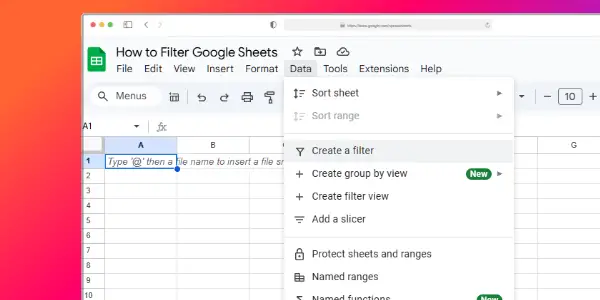Programs and projects are at the centre of driving success for every organization. Though they’re interrelated, their management differs from one another. This article explores the essential activities involved in program management, the difference between program and project managers, and the skills required to be a good program manager.
The primary examples of program management activities are evaluating and managing the portfolio, managing risks, supporting decisions, running the program, and engaging with stakeholders. A program manager usually carries out these responsibilities within the organization.
Programs and projects are related to one another. However, managing them can be quite a different experience, and the roles and responsibilities of a program manager differ from those of a project manager. We’ll explore these differences and much more through this article.
What Are Program Management Activities?
A program manager (PM) has a tough job and juggles many projects simultaneously. Here are some activities that this role must do:
Evaluating the Portfolio
A PM must keep track of all the projects within their portfolio to mitigate potential risks and identify room for improvement. They maintain a steady stream of communication with their project managers to ensure there are no blockers, and they have all the resources necessary to execute their milestones.
Risk Management
A PM has one main goal – to ensure the success of the projects in their portfolio. This includes anticipating and managing any risks to this success. Risks include a project getting delayed or new deliverables being added to the mix that impact delivery.
They must regularly evaluate the state of the projects and see these things coming to take the necessary corrective steps to eliminate and reduce these risks.
Running the Program
The role involves running the entire program, which includes tasks such as:
- Coordinating with project managers to manage the resources and budget
- Laying out the operating controls and parameters
- Maintaining the essence of the processes that define and run the projects within the program

Stakeholder Engagement
The company’s overall strategic vision comes from the stakeholders, so the PM must keep them in the loop with the status of the projects. Regular conversations and feedback sessions allow them to guide the project teams in the right direction for achieving success.
Refining the Operating Model
The operating model defines how a team is to operate when executing a project. Things like setting goals, reporting methods, processes, and communication channels are a part of this model. Naturally, this also needs continuous improvement.
A PM evaluates this model and updates it as necessary during the program. These updates are crucial in ensuring success and mitigating risks.
Supporting Decisions
Many decisions need to be made during a program. Program managers can support stakeholders in making these decisions by giving data and their opinion regarding the matter.
Different program managers have diverse inclinations towards certain decisions, which can shape the project’s overall direction.
What is Program Management?
A program combines different projects within an organization. These projects are usually related to similar objectives and domains, so combining them in one program makes sense, and having one program manager oversee them.
PMs run their projects through individual project managers. They set the overall strategy and direction of the projects and demand updates from the project managers to ensure the entire program is on track.
Program management is also essential in implementing organizational change and improving the existing processes and policies.

Program Management Vs. Project Management
To this day, many people still confuse program management with project management. In reality, the two are very different.
Projects have a single focus and objectives that a team needs to achieve within the set timeline, which can sometimes take months and, other times, years. The successful delivery of milestones can measure a project’s success.
These projects combine to form a larger objective, which is the program. A project’s success moves the program forward. A project manager runs the project, manages communication and risks, and ensures success.
Programs include a stream of these related projects and are linked to strategic goals. This is why they are long-running and sometimes even permanent because their goal is to achieve the bigger picture.
Let’s look at the difference between a project and a program to strengthen your understanding:
| Project | Program |
| Tasks with clear deliverables and deadlines | Large scope and fluid deadlines |
| Focuses on a single unit of work | Focuses on multiple units of work |
| Deals with short-term goals and deliverables | Deals with long term goals and deliverables |
| Deliverables usually remain the same | Deliverables may change based on project outcomes |
Program managers have a lot on their plate as they manage running the program, mitigating risks, and communicating with the stakeholders. Program managers should be resourceful enough to bring together the minds and resources necessary to solve any problem that threatens their strategic initiatives. We will explore the characteristics of a good program manager later in this article but first, let’s look at what the basic program management activities look like.
Differences Between a Program Manager and a Project Manager
Since we have already explored the difference between projects and programs, let’s also look at the main difference between the people who execute these two:
| Program Manager | Project Manager |
| Develops strategies | Develops and plans projects |
| Advises stakeholders | Tracks project progress |
| Reviews and improves projects | Works on resource allocation |
| Audits and does QA | Risk mitigation |
| Mentors project managers and teams | Internal communication |
Attributes of a Successful Program Manager
So, what does it take to be someone that can manage multiple projects and ensure success for each of them? Let’s take a look at a few of these:
Good Communication Skills
Communication drives any initiative to its success, and programs are no different. There are a variety of skills a program manager can use to be successful, but none is as important as effective communication. There are essentially three types of communication and reporting they must excel at:
- Status Reporting – They must have good written and verbal communication skills. They must communicate the project’s current state in a clear and comprehensive manner to give everyone a transparent view of the projects. They must be able to mold their communication according to the medium and the audience.
- Problem-Solving – This skill is continuously required to ensure the program stays on track. Problems, obstacles, and resistance are common during the long course of a program, and a program manager must have the skills necessary to mitigate these.
- Direction Setting – This is required to set the overall direction of the project, including deadlines and deliverables of the individual projects. Program managers must stay in touch with the project managers to ensure deadlines are met and know how projects progress.
They must establish their authority over the projects they oversee with the help of these forms of communication. They must appear as the day-to-day manager and senior leadership responsible for the program’s execution and success.

Alignment Building
Good program managers should be able to bring multiple teams and employees on the same page to achieve the company’s strategic goals. They should have a good rapport in the organization and command employee respect.
Risk Analysis
Proactive risk assessment and mitigation differentiate a good program manager from the rest. Being proactive in facing risks is one of the most vital skills a program manager can have. They must be able to identify, escalate and resolve risks continuously.
Attention to Detail
A program manager juggles a host of different metrics and indicators. They need to be able to connect these together. These include correlating budgets, resources, deadlines, and more to ensure every aspect of the project is on track. While they are doing all this, they also need to ensure that all these things are properly documented and reported.
Technically Proficient
We live in an era of technology-driven enhancements. This means that most projects will focus on technology. A program manager has to ensure program continuity which means they should have the sound technical knowledge to understand the blockers and assess the progress of the projects in their portfolio.
Negotiation Skills
Maintaining harmony within teams and departments is crucial for program success. Program managers need good negotiation skills to ensure a peaceful environment when resistance or problems arise.
Patience and Perseverance
Lastly, patience is your biggest virtue as a program manager. Programs are a long journey to get your organization to achieve its long-term strategic objectives. This means that program managers have to be patient and persevere through different project lifecycles. This patience will permeate through your teams and help them achieve their goals without getting frustrated.
Top 5 Benefits of Program Management
The introduction of program management into a company can hugely help with the overall business strategy as it is the highest form of streamlining projects with common objectives. It makes management easier; imagine having to manage 300 projects – quite difficult, right? But managing 30 programs? Much better.
Here are some benefits of grouping related projects together and running them in a program rather than managing them separately:
You Can Easily Share Resources
Projects might be run separately and have different objectives, but that doesn’t mean they don’t require the same resources as each other. Resources are better utilized and are easy to share in a program because the program manager has a high-level view of their entire portfolio, and they can effectively identify areas that need these resources the most.
Examples of commonly shared resources include IT development time, training and development (time to develop and distribute information) and the marketing team.
One project may demand more from these areas and more budget than other projects. The people working on other individual projects will understand this and may even be available to work on the project that requires extra resources. This allocation may slow down one project, but it will benefit the overall organization in the bigger picture.
Shared resources also mean that they can all learn from each other while sharing their experiences and lessons.
Conflict Management is Easier
The main source of conflict between projects and project managers is prioritization, but this gets resolved when there is a clear line of hierarchy and the program manager makes decisions regarding project priority.
By having a clear set of program objectives and program goals, the senior management team can set a clear priority order with the program team.
The program team can ensure everyone is clear on the priority order and who things need to be escalated to. It’s easier to identify the source of issues from the top-level view of all the projects. Having a clear line of escalation can also deter such conflicts from occurring in the first place.

Risks are More Visible
Since there are multiple projects within a program, there are shared logs on managing and mitigating certain risks. These program logs maintain documentation that project managers can access. These logs will save you the time and effort spent developing responses to common risks.
Project managers can identify the risks but escalate them to the program manager, who can then compare notes and evaluate the entire portfolio of the risk history of the program.
Interdependencies are Easier to Manage
Sometimes projects are dependent on one another, with one project needing another to complete before it can be initiated. When such projects are grouped together in a program, managing these interdependencies can become easier under the supervision of a program manager.
The program manager can see the bigger picture, and that means they can ensure that projects start and end at the designated times to ensure the overall program stays on track.
Frequently Asked Questions
What is the goal of a program manager?
The main goal of a project manager is to drive success and benefits for an organization through shared resources, costs, time, and other inputs. Programs combine related projects together, which enables better management.
Why is program management important?
Program management allows an organization to manage, fund, prioritize, and optimize resource capacity, conflicts, and interdependencies. Program managers are known to have a high-level view of the entire organization and deep knowledge of its working, so they are seen as information hubs of the organization.
What are program metrics?
These are metrics designed to monitor, control, evaluate, and benchmark a program. These include metrics designed for risks, finance, budget, projects, and effectiveness.
Final Thoughts
Program management is essential for managing multiple projects within an organization. They link similar projects and add them to one portfolio, allowing the program manager to see things from a high level and manage them accordingly.





